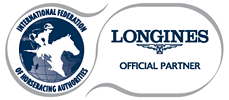IFHA News No.7 (2010)
To: IFHA/FIAH Members
From: Aki AKITANI (Deputy Secretary General)
Date: August 3, 2010
REF: Welfare and Safety of the Racehorse Summit in the US
The third Welfare and Safety of the Racehorse Summit was held in Kentucky on June 28th & 29th. All sessions except for some part of 29th were open to the public, and those sessions were also covered by video streaming for the first time.
The Summit has identified the issue and objectives in four areas and they were Racing Equipment and Safety, Racetrack Environment and Training Practices, Education (Licensing and Continuing Education), and Transitioning Thoroughbreds to Second Careers.
Identified primary objectives in the Summit were:
- Establishment of a rider injury database to collect data and develop practices that will reduce injuries
- Creation of a track liaison position at each racetrack to coordinate aftercare of retired racehorses
- Formalization of reciprocity of veterinarians’, stewards’ and starters’ lists on a national basis
- Implementation of advanced safety equipment, including starting gates and safety rails, on a phased basis, depending on data
- Development of a comprehensive database of track maintenance, training and veterinary records that could be integrated with existing databases pertaining to human and equine safety
- Creation of veterinary guidelines, in conjunction with the American Association of Equine Practitioners, to determine potential and appropriate second careers for racehorses based on physical condition
- Establishment of a mechanism to encourage continuing education for people working with Thoroughbreds, including trainers, grooms, farriers, and jockeys, to improve horsemanship and as a means to accreditation
Mr. Jim Gagliano, President and Chief Operating Officer of The Jockey Club who moderated the final panel discussion on implementation of safety and soundness recommendations said “We have demonstrated to those who watch our sport closely that we can make reforms as an industry. We should be proud of the steady progress we’ve made but we need to keep at it. We need to use any mechanism we can, whether it’s model rules, a regulatory compact, the NTRA Safety and Integrity Alliance or rules put in place by organizations such as Breeders’ Cup or the Graded Stakes Committee of the Thoroughbred Owners and Breeders Association, to effect change.”
More information of the Summit is available at:
http://www.grayson-jockeyclub.org/summitDisplay.asp?section=41
|



